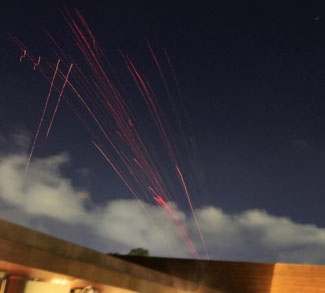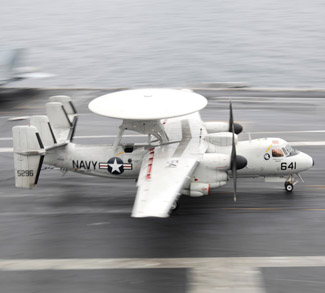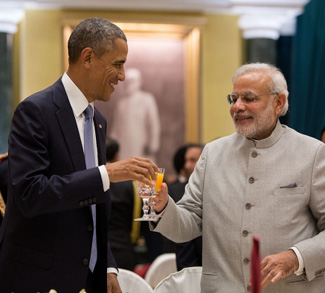Washington’s re-engagement with the Asia Pacific, or “Asia pivot,” is not as new as the US media and some political commentators have made it out to be. It has long been US policy to prevent the emergence of a single power dominating the Asia Pacific region, and US planners have carefully maintained a regional balance of power since the days of the Cold War. The result is a longstanding US military, diplomatic, and economic presence throughout the region, much of which predates any mention of a “pivot.” The Arab Spring and its aftermath have not distracted Washington from the importance of playing a leading role in the Asia-Pacific region. The belief that US military engagement in Afghanistan and subsequently Iraq involved a substantive shift away from Asia is simply erroneous.
An Enduring US Footprint in the Asia Pacific
Economic
Promoting economic cooperation and global trade has been a consistent theme of US foreign policy. Thus, the Trans-Pacific Partnership does not represent a break with the past, but rather the continuation of a multi-decade push by the United States and its allies to open up regional markets. Washington has also cast a wide net with various nuclear deals, most notably with India in May 2006 to support the South Asian state’s civilian nuclear program, which helped consolidate US influence relative to other Asian powers, namely Russia and China. Other economic deals have been negotiated with regional players, notably Tokyo and Seoul, as Washington pursues its national interest to deepen trade links in the region.
Military
While Washington was fighting wars in Afghanistan and Iraq, various Asia-Pacific allies such as Australia, Japan, South Korea, and Taiwan were seeking to increase military cooperation and interoperability with US forces. Some agreements reached over this period include boosting military exchanges with Japan and approving new military sales to Taiwan. The decision by the Obama administration in late 2011 to station troops in Australia on a rotation basis does not represent a break with the past because it is consistent with US forward-deployment strategy in the Asia Pacific, which will be touched on shortly.
Diplomatic
Washington’s ‘hub-and-spoke’ system of alliances has remained in place since the end of the Cold War. The scheme helps preserve America’s hegemonic position along with the regional status-quo. More recently however, the ‘hub-and-spoke’ system has come to be complimented by multilateral initiatives, such as ASEAN and APEC. This renewed emphasis on multilateralism stands as an attempt to balance against growing Chinese economic and diplomatic influence – influence that threatens to marginalize US power in the future. Hence, whilst Washington has slowly shifted its focus away from bilateral initiatives and towards multilateral cooperation, its commitment to preserve the status-quo in the region remains unchanged.
US Foreign Policy Aims
Extended Nuclear Deterrence
The United States provided extended nuclear deterrence for its allies throughout the Cold War and it continues to do so today. Nowadays these efforts are aimed at nuclear-armed adversaries such as North Korea. The issue of just how reliable said deterrence is stands as a topic that’s outside the scope of this article, but it seems that the nuclear deterrence once aimed at states like the Soviet Union and China has thus far been successful in stemming any major tide of nuclear proliferation in the Asia Pacific.
Off-Shore Balancing
The beginning of the Cold War ushered in a new era of ‘off-shore balancing,’ which involved permanently positioning US troops and bases in allied countries such as Japan and South Korea. The original rationale behind the strategy was to complement US containment efforts by restricting the possibility of USSR expansionism. Today the rationale remains the same, though the question of who plays the role of foreign aggressor has become murkier.
Preserving an Asia-Pacific Balance of Power
US foreign policy will always be aimed at preventing the rise of one dominant power in the Asia Pacific region. In this, the US is a victim of its own geography, being reliant on safe and secure Atlantic and Pacific waterways for its survival and economic wellbeing.
The More Things Change…
While it’s true that American influence in the region has declined relative to the rise of China, Washington never diverted its attention to the degree that the ‘pivot’ label implies. It still seeks to maintain the status-quo as it always has, and the United States remains a valuable military and economic partner to several middle powers in the region.
On the other hand, it’s quite possible that Beijing will not be able to maintain the kind of economic growth it has been experiencing for the past few decades. China will be facing several challenges in the coming years, whether demographic (an aging population), social (urban-rural divide), or economic (a difficult wean from SOE-driven growth towards a market economy). Regardless of whether Beijing is able to proactively deal with these problems or not, it stands to reason that US military forces and economic influence will remain in the region long after the word “pivot” has faded from the collective lexicon of pundits worldwide.




